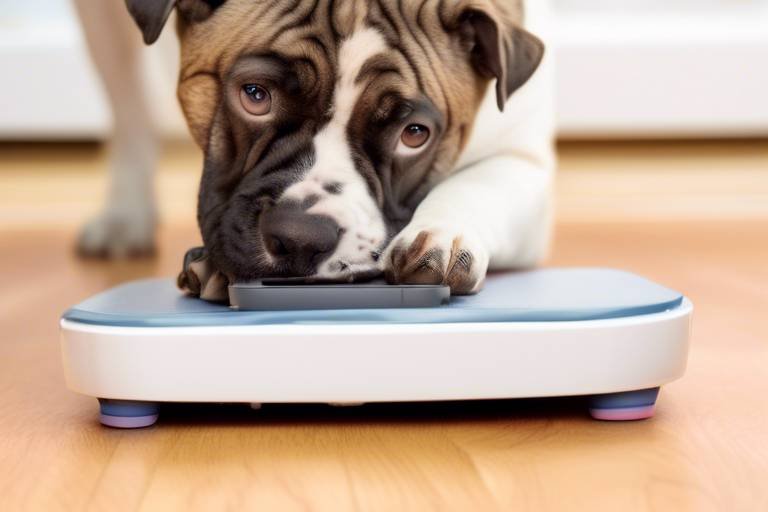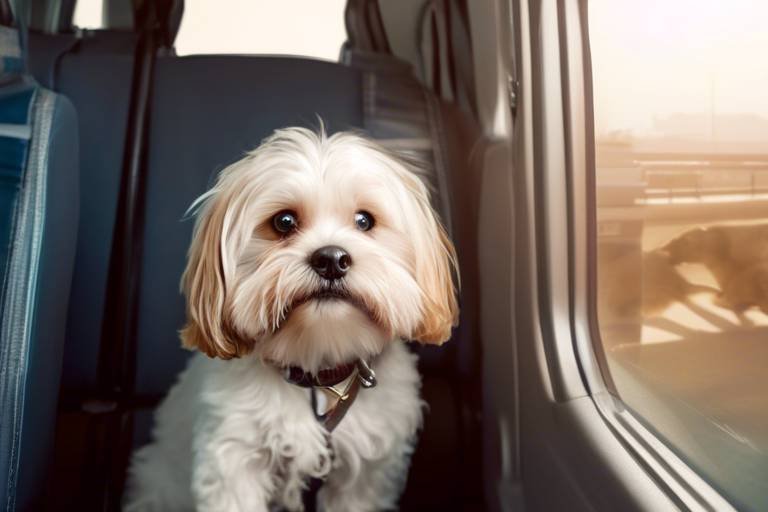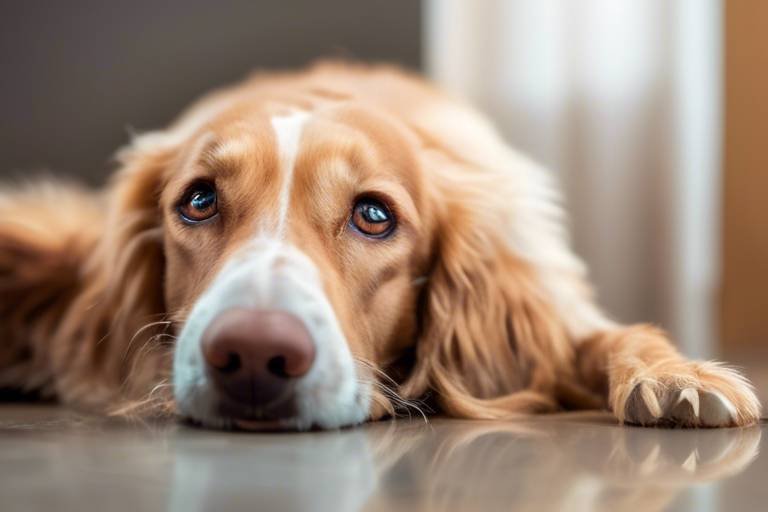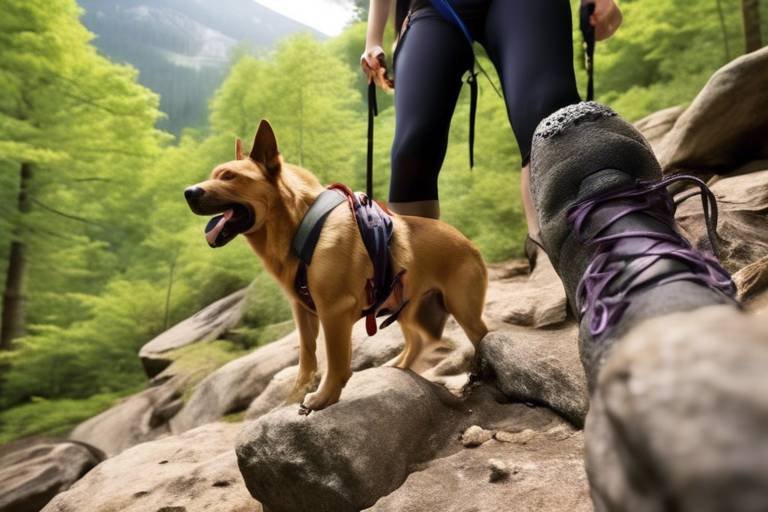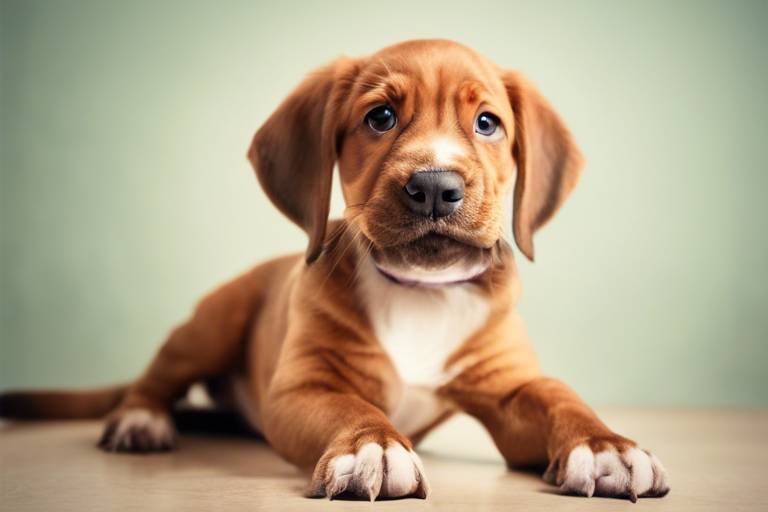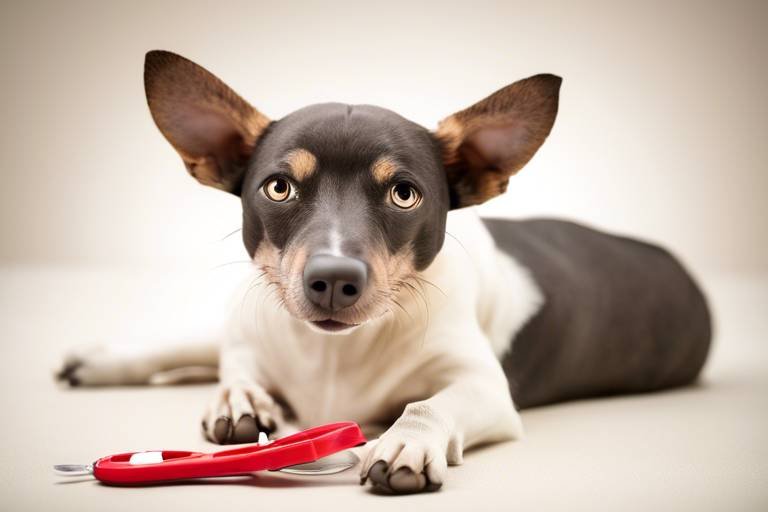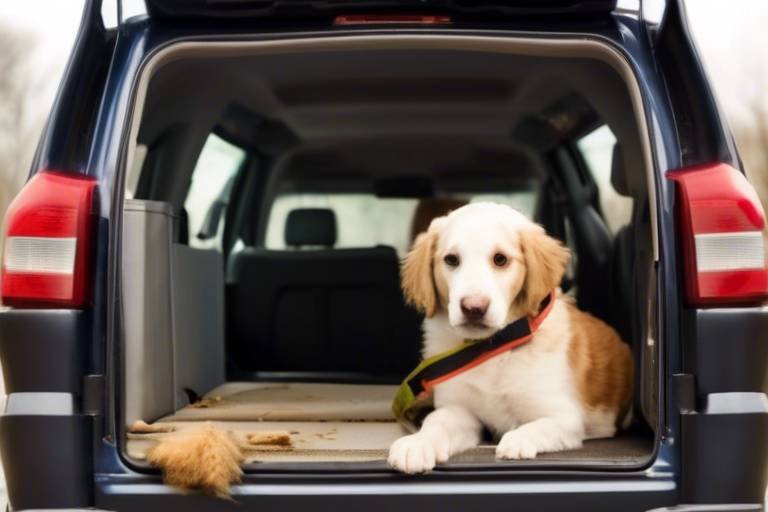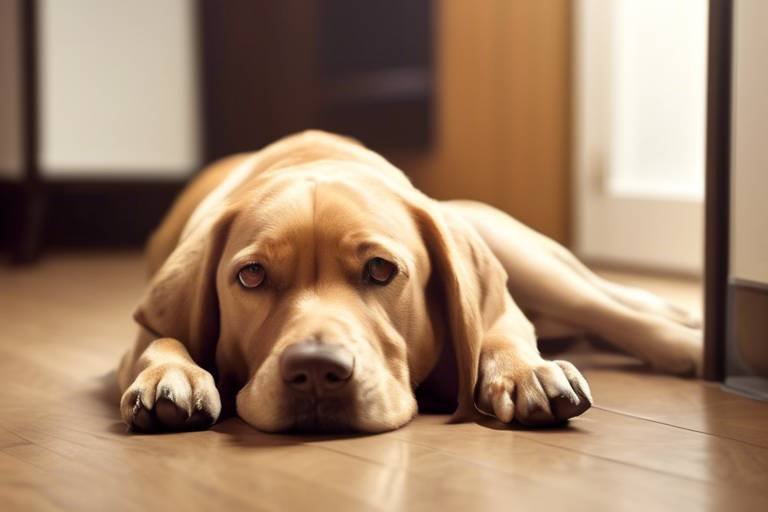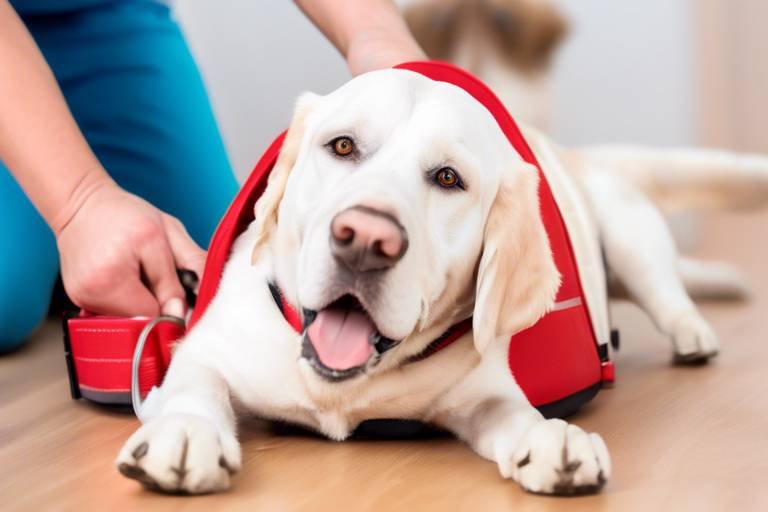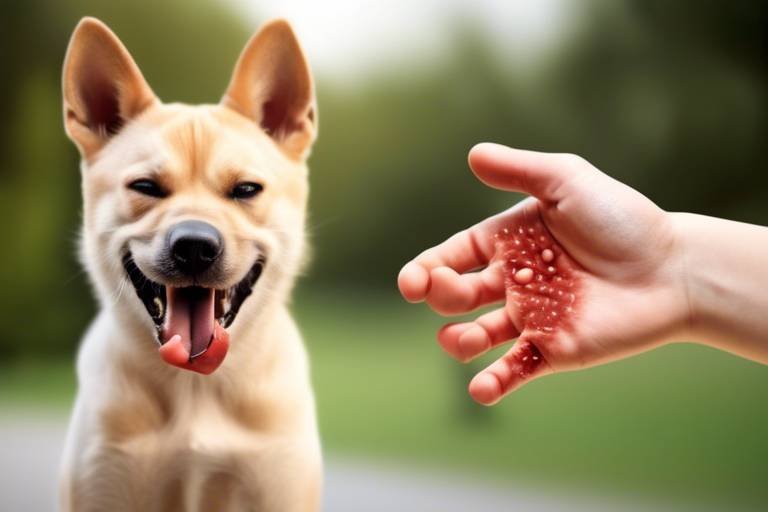How to Recognize and Address Pet Obesity
As pet owners, we often think of our furry companions as part of the family. We want to shower them with love, affection, and, of course, treats. However, this well-meaning behavior can sometimes lead to a serious issue: obesity. Pet obesity isn’t just a cosmetic problem; it’s a health crisis that can shorten your pet’s lifespan and lead to various medical conditions. In this article, we will explore the causes, consequences, and solutions for pet obesity, offering insights on how to identify overweight pets and implement effective weight management strategies for their health and well-being.
Pet obesity is a growing concern, impacting the health of millions of animals. But what exactly constitutes obesity in pets? Generally, a pet is considered obese when it weighs at least 20% more than its ideal body weight. Factors contributing to this condition include poor diet, lack of exercise, and even genetic predisposition. Understanding these factors is crucial for pet owners who want to ensure their furry friends live long, healthy lives.
Several factors contribute to pet obesity, and recognizing them can help you take proactive steps. One of the primary culprits is diet. Many pet owners unknowingly overfeed their pets, often due to a lack of understanding about proper portion sizes or the caloric content of their pet's food. Additionally, a sedentary lifestyle can exacerbate the issue. Pets, much like humans, require regular exercise to maintain a healthy weight. Lastly, some pets may have a genetic predisposition to gaining weight, making it even more critical for their owners to monitor their diet and activity levels closely.
The type and amount of food pets consume play a crucial role in their weight. Many pet owners make common dietary mistakes that lead to obesity without even realizing it. For example, feeding table scraps or not measuring portion sizes can quickly add extra calories to a pet's diet. To avoid these pitfalls, it's essential to educate yourself about your pet's nutritional needs and stick to a structured feeding schedule.
Understanding proper portion sizes is essential for maintaining a pet's healthy weight. Many pet food packages provide guidelines, but these can sometimes be misleading. It's important to consider your pet's age, breed, and activity level when determining how much to feed. A good rule of thumb is to measure your pet's food using a standard measuring cup and to avoid free-feeding, which can lead to overeating.
Not all pet foods are created equal. Just like humans, pets benefit from high-quality, nutritious food. Look for products that list real meat as the first ingredient and avoid those with excessive fillers or artificial additives. Investing in a premium pet food can pay off in the long run by preventing obesity and promoting overall health.
Regular physical activity is vital for keeping pets fit. Just as we need to move our bodies to stay healthy, so do our pets. Incorporating more activity into your pet's daily routine can be as simple as taking longer walks, playing fetch, or engaging in interactive toys that stimulate both their mind and body. The goal is to make exercise enjoyable so that your pet looks forward to it.
Identifying overweight pets can be challenging, especially if they gain weight gradually. However, there are key signs and symptoms to watch for. A simple way to assess your pet’s condition is to feel their ribs; you should be able to feel them without excessive pressure. If you can’t, it might be time to reevaluate their diet and exercise regimen.
There are specific physical indicators that can help determine if a pet is overweight. Look for a lack of an obvious waist when viewed from above, and check for a sagging belly. These signs can be alarming, but recognizing them early can help you take action before more serious health issues arise.
Pets may exhibit behavioral changes when they are overweight. You might notice a decline in their energy levels, reluctance to play, or difficulty in performing everyday activities like jumping onto the couch. These behavioral shifts can be telling signs that your pet is struggling with their weight and needs your help.
Once obesity is recognized, addressing it becomes crucial. The first step is to create a structured weight loss plan tailored to your pet’s specific needs. This plan should include dietary adjustments and increased physical activity. Remember, gradual weight loss is the safest approach; aim for about 1% to 2% of their body weight per week.
A structured weight loss plan is essential for success. Start by consulting your veterinarian to determine your pet's ideal weight and caloric needs. From there, you can develop a personalized plan that includes:
- Caloric intake adjustments
- Increased exercise routines
- Regular check-ins to monitor progress
By sticking to this plan, you can help your pet shed those extra pounds safely and effectively.
Tracking a pet's weight loss journey is important for motivation and success. Regular weigh-ins can help you gauge progress and make necessary adjustments to the plan. Consider keeping a journal to document your pet's food intake, exercise routines, and weight changes. This not only provides a clear picture of their journey but can also be a great source of motivation for both you and your pet.
Q: How can I tell if my pet is overweight?
A: You can assess your pet's weight by feeling their ribs and checking for an obvious waist. If you can't feel their ribs without pressing hard, they may be overweight.
Q: What are the health risks associated with pet obesity?
A: Obesity can lead to various health issues, including diabetes, joint problems, and heart disease. It's essential to address weight issues to prevent these complications.
Q: How long does it take for a pet to lose weight?
A: Weight loss varies by pet, but a safe and sustainable rate is about 1% to 2% of their body weight per week. Consistency is key!
Q: Should I consult a veterinarian for a weight loss plan?
A: Absolutely! A veterinarian can provide personalized guidance based on your pet's specific needs, ensuring a safe and effective weight loss journey.

Understanding Pet Obesity
Pet obesity is not just a simple issue of a pet being a little chubby; it’s a serious health concern that affects millions of furry friends worldwide. Just like humans, pets can struggle with their weight, and this can lead to a myriad of health problems. But what exactly constitutes obesity in pets? Generally, a pet is considered obese when it weighs 20% or more above its ideal body weight. This excess weight can significantly impact their overall health, leading to conditions such as diabetes, joint problems, and heart disease.
Several factors contribute to pet obesity, making it essential for pet owners to understand the underlying causes. One of the primary reasons is the balance between calorie intake and energy expenditure. If a pet consumes more calories than it burns, the excess energy is stored as fat, leading to weight gain. Additionally, other factors play a vital role, such as:
- Dietary Choices: The type of food and the quantity can greatly influence a pet's weight. High-calorie treats and low-quality pet foods can lead to overeating.
- Lack of Physical Activity: Pets that do not get enough exercise are more likely to become overweight. Just like us, they need to burn off those extra calories!
- Genetics: Some pets may be genetically predisposed to obesity, making them more susceptible to gaining weight.
Understanding these factors is crucial for pet owners who want to keep their pets healthy. It's not just about aesthetics; it's about ensuring a long, happy life for our furry companions. If we can recognize the signs of obesity early on, we can implement changes that will make a significant difference in their health and well-being.
Moreover, it's essential to remember that pet obesity is often preventable. By being proactive and educating ourselves about proper pet care, we can help our pets maintain a healthy weight. This includes providing balanced nutrition, ensuring regular exercise, and being mindful of their overall lifestyle. After all, our pets rely on us to take care of their needs, and that includes their weight management!
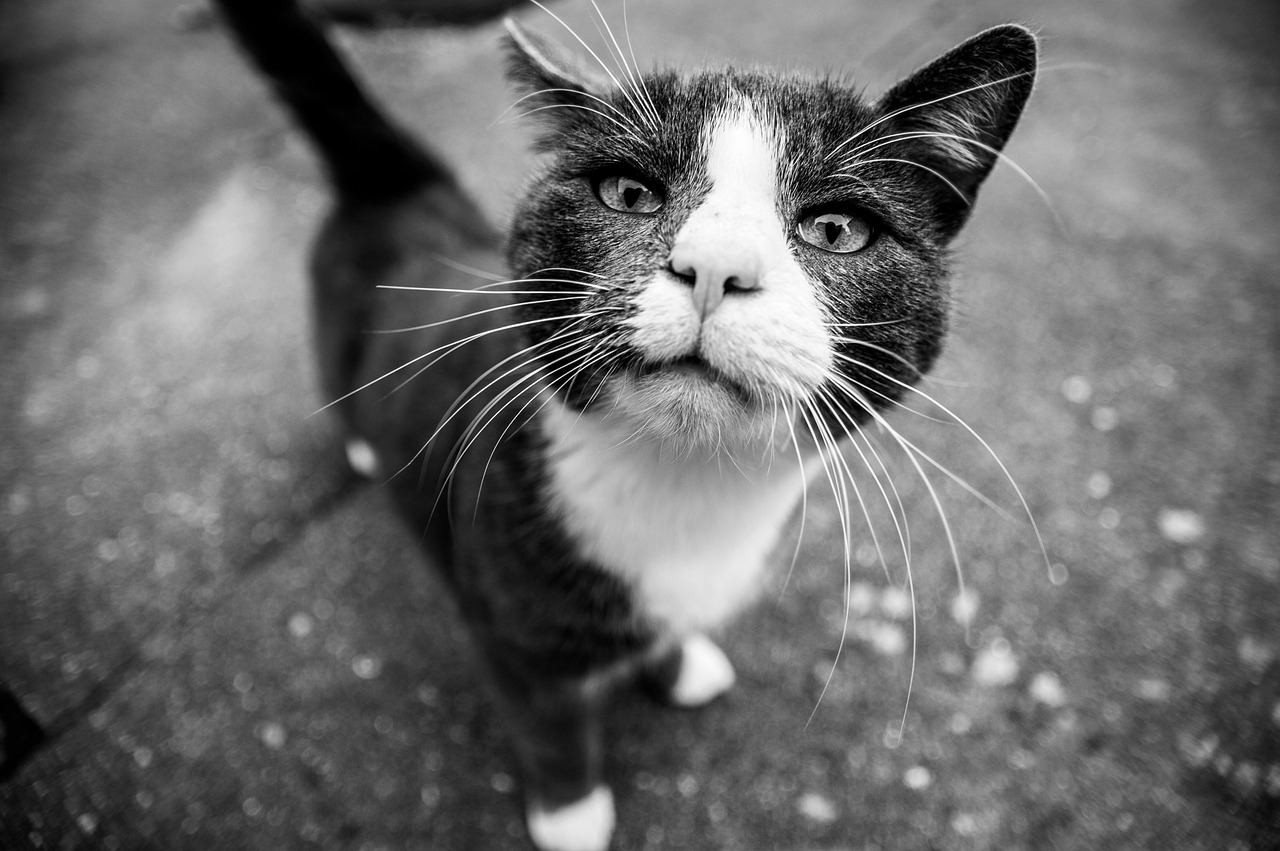
Causes of Pet Obesity
Pet obesity is not just a cosmetic issue; it’s a serious health concern that can lead to a myriad of complications for our furry friends. Understanding the causes of pet obesity is the first step in tackling this growing epidemic. There are several factors that contribute to this condition, and recognizing them can help pet owners make informed decisions about their pets' health. Let's dive into some of the primary causes.
One of the most significant factors is diet. Many pet owners may unknowingly overfeed their pets or choose low-quality food that lacks essential nutrients. It's like feeding a child nothing but candy; while it might seem appealing, it certainly won't promote health! Pets require a balanced diet that meets their specific needs based on their age, breed, and activity level. Furthermore, some pet owners may be unaware of the caloric content of certain foods, leading to unintentional overfeeding.
Another critical aspect is the lack of exercise. Just like humans, pets need regular physical activity to maintain a healthy weight. Many pets lead sedentary lifestyles, particularly those that are kept indoors for long periods. This lack of movement can be attributed to busy schedules, lifestyle choices, or simply not knowing how to engage pets in play. Think of it this way: if you were to sit on the couch all day, you'd likely gain weight too!
Additionally, genetic predisposition plays a role in pet obesity. Some breeds are more prone to weight gain than others due to their metabolic rates and body structures. For instance, breeds like Labrador Retrievers and Beagles are known to have a higher tendency to become overweight. It's crucial for pet owners to be aware of their pet's breed-specific needs and potential weight challenges.
Moreover, environmental factors cannot be overlooked. The home environment can significantly influence a pet's activity levels and dietary habits. For example, homes with easy access to food or treats may encourage pets to eat more than necessary. Similarly, pets that are not provided with adequate space or opportunities for play may become bored and inactive, leading to weight gain.
In summary, the causes of pet obesity are multi-faceted, including:
- Dietary Choices: Overfeeding and poor-quality food.
- Lack of Exercise: Sedentary lifestyles and insufficient physical activity.
- Genetic Factors: Breed predispositions to weight gain.
- Environmental Influences: Access to food and opportunities for play.
By understanding these causes, pet owners can take proactive steps to ensure their pets maintain a healthy weight. It’s all about creating a balanced lifestyle that includes proper nutrition and regular exercise. After all, our pets rely on us to keep them happy and healthy!
Dietary Factors
When it comes to pet obesity, play a pivotal role that can’t be ignored. Just like humans, our furry friends can easily fall into the trap of overeating and consuming low-quality foods. It's essential to understand that what we feed our pets directly impacts their weight and overall health. Many pet owners may not realize that even small changes in diet can lead to significant differences in their pet's weight over time. So, what are the common dietary pitfalls that lead to obesity in pets? Let's dive into some critical areas.
First and foremost, the type of food you choose for your pet is crucial. Not all pet foods are equal, and some are packed with fillers and artificial ingredients that provide little nutritional value. When selecting a pet food, look for options that list high-quality protein sources as the first ingredient. Remember, a diet rich in whole ingredients can help maintain your pet's weight and promote better health. If you’re unsure about what to choose, consulting your veterinarian can provide clarity and guidance.
Another significant aspect to consider is portion control. It’s easy to overfeed our pets, especially when they give us those adorable pleading eyes. However, understanding proper portion sizes is essential for maintaining a healthy weight. Many pet food bags provide feeding guidelines based on your pet’s weight, but these are just starting points. Depending on your pet's activity level and metabolism, you might need to adjust these portions. For instance, if your dog is more of a couch potato than a playful pup, reducing their food intake slightly can make a big difference.
To help visualize portion sizes, here's a simple
| Pet Weight (lbs) | Daily Food Amount (cups) |
|---|---|
| 5-10 | 1/2 - 1 |
| 11-20 | 1 - 1 1/2 |
| 21-50 | 1 1/2 - 2 1/2 |
| 51-75 | 2 1/2 - 3 1/2 |
| 76+ | 3 1/2 - 4+ |
In addition to portion control, it’s also vital to be mindful of treats. Treats can be a great way to reward your pet, but they can also contribute to weight gain if not given in moderation. Aim to keep treats to less than 10% of your pet's daily caloric intake. You might consider healthier alternatives like carrot sticks or apple slices, which can be just as enjoyable for your pet without the extra calories.
Lastly, remember that consistency is key. Establishing a regular feeding schedule can help regulate your pet’s appetite and prevent begging behaviors. By feeding at the same times each day, you can help your pet know when to expect meals, which can reduce the likelihood of overeating.
In summary, being aware of the dietary factors that contribute to pet obesity is the first step in ensuring a healthier, happier life for your furry companions. By choosing high-quality food, practicing portion control, and being mindful of treats, you can make a significant impact on your pet's weight and overall health.
Portion Control
Understanding proper portion sizes is essential for maintaining a pet's healthy weight. Just like humans, pets can easily fall into the trap of overeating, often due to our love and desire to treat them. However, it’s crucial to remember that what seems like a small snack for us can actually add up to a significant amount of calories for our furry friends. So, how do we ensure we’re feeding them the right amount? The first step is to consult your veterinarian, who can provide specific recommendations based on your pet's age, breed, and activity level.
One effective way to manage portion control is by using a measuring cup or a kitchen scale to measure your pet's food accurately. Many pet owners eyeball their pet's food, which can lead to overestimating portions. To avoid this, consider the following tips:
- Read the Feeding Guidelines: Most pet food packages include feeding guidelines based on your pet's weight. Use these as a starting point, but remember that individual needs may vary.
- Divide Meals: Instead of leaving food out all day, divide your pet's daily intake into two or three meals. This not only helps control portions but also keeps your pet satiated throughout the day.
- Monitor Treats: Treats should make up no more than 10% of your pet's daily caloric intake. Be mindful of how many treats you give and consider healthier options, like carrots or green beans.
To illustrate the importance of portion control, consider the following table that outlines recommended daily food intake based on a pet's weight:
| Pet Weight (lbs) | Recommended Daily Intake (cups) |
|---|---|
| 5 | 1/4 - 1/2 |
| 10 | 1/2 - 1 |
| 20 | 1 - 1 1/2 |
| 50 | 1 1/2 - 2 1/2 |
| 75 | 2 - 3 |
By adhering to these guidelines, you can significantly reduce the risk of obesity in your pet. Remember, portion control is not just about measuring food; it’s about understanding your pet's unique needs and being proactive in their health journey. After all, a healthy pet is a happy pet!
Quality of Food
When it comes to keeping our furry friends healthy and fit, the they consume is paramount. Just like humans, pets need a balanced diet that provides the right nutrients to maintain a healthy weight and overall well-being. Unfortunately, not all pet foods are created equal, and many pet owners may unknowingly choose options that contribute to obesity. So, how do you ensure that your pet is getting the best nutrition possible?
First off, it's crucial to understand that high-quality pet food typically contains real meat as the primary ingredient, rather than fillers or by-products. Ingredients such as corn, wheat, and soy are often used as cheap fillers that can lead to weight gain. Instead, look for foods that list specific protein sources, like chicken, beef, or fish, at the top of the ingredient list. This ensures that your pet is receiving the necessary protein to support their energy levels and muscle health.
Another factor to consider is the nutritional balance of the food. A good pet food should provide a well-rounded mix of protein, fats, carbohydrates, vitamins, and minerals. You might want to check for the Association of American Feed Control Officials (AAFCO) statement on the packaging, which indicates that the food meets certain nutritional standards. This is a good sign that the food has been formulated to support your pet's health.
Moreover, it’s essential to be aware of the caloric density of the food you choose. Some premium brands may have higher calorie counts, which can lead to overfeeding if not carefully monitored. It’s a good idea to consult with your veterinarian about the appropriate caloric intake for your pet based on their age, breed, and activity level. Remember, just because a food is marketed as “premium” or “natural” doesn’t mean it’s the best choice for your pet.
To help you make informed decisions, here’s a quick comparison of common pet food ingredients:
| Ingredient Type | Quality | Potential Issues |
|---|---|---|
| Real Meat | High | Supports muscle health |
| Meat By-products | Low | Can be low in quality nutrients |
| Fillers (Corn, Wheat, Soy) | Low | May lead to weight gain |
| Whole Grains | Medium | Good energy source, but should be balanced |
In conclusion, investing in high-quality pet food is a vital step towards preventing obesity in your pets. By choosing foods that prioritize real ingredients and nutritional balance, you can help your furry friends maintain a healthy weight and enjoy a longer, happier life. So next time you’re at the pet store, take a moment to read those labels and make a choice that will benefit your pet in the long run!
- What is the best way to choose pet food? Look for foods with real meat as the first ingredient and check for AAFCO certification.
- How can I tell if my pet is overweight? Check for physical signs such as a lack of a defined waist or difficulty in feeling their ribs.
- Can I feed my pet human food? Some human foods are safe, but always consult your vet first to avoid harmful ingredients.
- How often should I feed my pet? This varies by pet; consult your vet to establish a feeding schedule based on your pet's needs.
Exercise and Activity Levels
When it comes to keeping our furry friends healthy, exercise is just as important as a balanced diet. Think of it like this: just as we need to move our bodies to stay fit, pets require regular physical activity to maintain a healthy weight and overall well-being. Unfortunately, many pets today lead a sedentary lifestyle, often lounging around the house all day while their owners are busy with work or other commitments. This can lead to a myriad of health issues, including obesity, which is why we need to prioritize their activity levels.
So, how much exercise does your pet really need? The answer can vary based on several factors, including breed, age, and overall health. For instance, a young, energetic Labrador Retriever might require more exercise than a senior Chihuahua. Generally, most pets should aim for at least 30 minutes to 2 hours of exercise each day. This can include walks, playtime, or even engaging in interactive games. Here’s a quick breakdown:
| Pet Type | Recommended Daily Exercise |
|---|---|
| Dogs | 30 minutes to 2 hours |
| Cats | 15 to 30 minutes |
| Small Pets (like rabbits) | 1 to 2 hours |
Incorporating exercise into your pet’s routine doesn’t have to be a chore. It can be a fun bonding experience for both of you! Try taking your dog for a brisk walk in the park or tossing a ball around in the backyard. For cats, consider using feather wands or laser pointers to get them moving. Even small changes, like encouraging your pet to chase after a toy or climb a cat tree, can make a significant difference.
But let’s be real: sometimes our pets can be a bit lazy. If your pet isn’t used to exercising, start slow and gradually increase the intensity and duration of their workouts. Just like us, they need to build stamina and get comfortable with the idea of being active. Setting a routine can also help. Try to schedule daily playtime or walks at the same time each day, so it becomes a part of their lifestyle.
Additionally, you can mix things up to keep your pet interested. Consider variety in their exercise routine, such as:
- Taking different routes on walks to explore new scents and sights.
- Introducing new toys or puzzles that challenge them mentally and physically.
- Organizing playdates with other pets to encourage social interaction and exercise.
Remember, the key is to make exercise enjoyable. If your pet associates physical activity with fun, they’ll be more likely to engage in it regularly. Plus, a well-exercised pet is typically happier and more relaxed at home, leading to fewer behavioral issues.
Lastly, always consult your veterinarian before starting any new exercise regimen, especially if your pet has underlying health conditions. They can provide tailored advice that considers your pet’s unique needs and ensure that your furry friend stays safe while getting fit.
Q: How can I tell if my pet is getting enough exercise?
A: Look for signs of a healthy weight, increased energy levels, and a positive mood. If your pet seems lethargic or is gaining weight, it may be time to increase their activity.
Q: What are some fun activities to do with my pet?
A: You can try hiking, playing fetch, agility training, or even swimming if your pet enjoys water. The key is to find activities that both you and your pet love!
Q: How can I motivate my lazy pet to exercise?
A: Start with short, playful sessions and gradually increase the duration. Use toys, treats, or even other pets to encourage them. Making it a game can spark their interest!
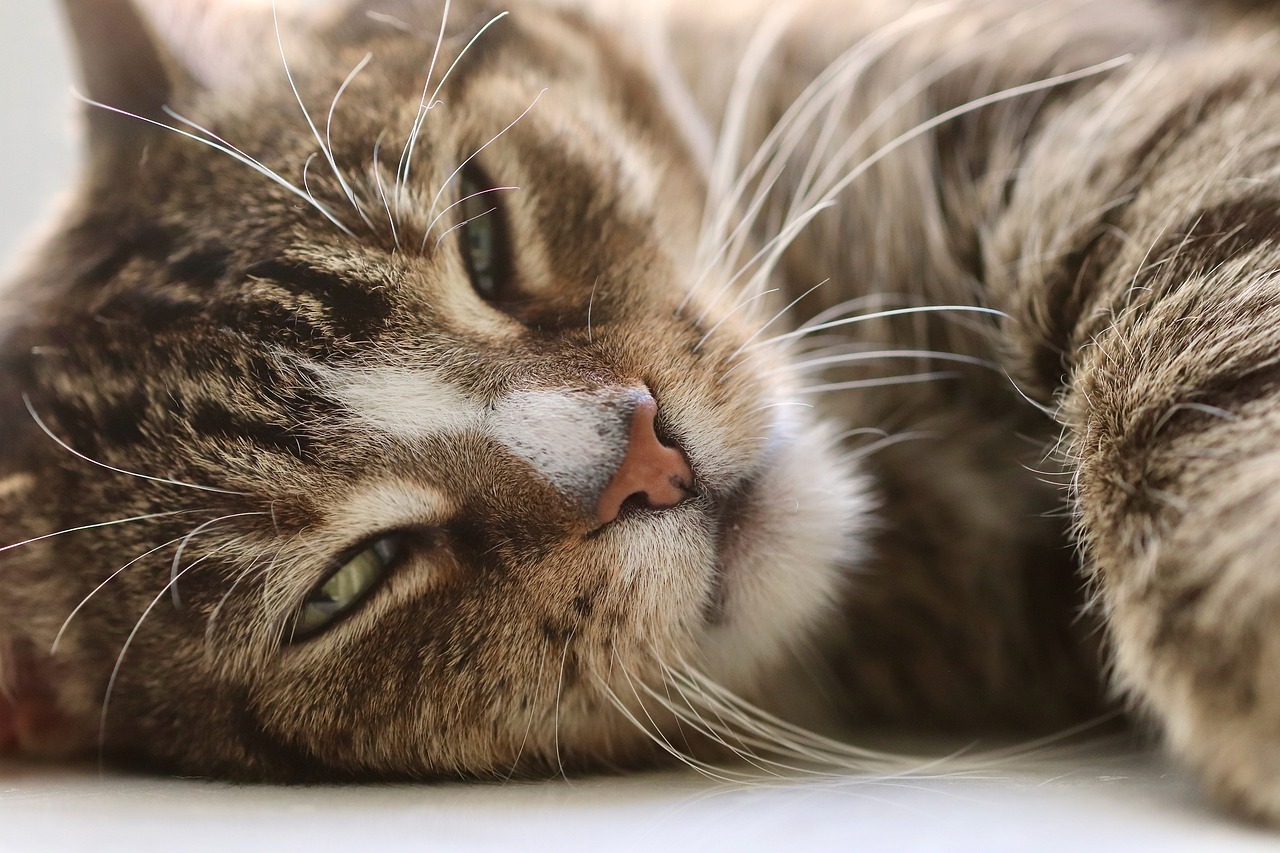
Recognizing Obesity in Pets
Recognizing obesity in pets is crucial for their overall health and well-being. Just like humans, pets can suffer from the consequences of carrying extra weight, which can lead to serious health issues. But how can you tell if your furry friend is tipping the scales? It’s not always as straightforward as it seems. Many pet owners might not realize their pets are overweight until it’s too late. In this section, we’ll explore some key signs and symptoms that indicate a pet may be obese, helping you take action early and effectively.
First and foremost, it's important to understand that obesity isn't just about looking a certain way. It's about health. Many pet owners mistakenly believe that a pet with a round belly is just "cute." However, a pet's body condition score (BCS) is a more accurate measure of their health. The BCS ranges from 1 to 9, with 1 being severely underweight and 9 being severely overweight. Ideally, pets should fall between 4 and 5 on this scale. You can assess your pet's BCS by feeling their ribs; you should be able to feel them without too much pressure. If you can’t feel their ribs or if there’s a noticeable layer of fat, it’s time to take a closer look at their weight.
In addition to physical assessments, certain behavioral signs can also indicate that your pet may be overweight. For instance, if your usually playful dog seems less interested in chasing a ball or your cat prefers lounging all day instead of playing, these could be red flags. Keep an eye out for changes in energy levels and activity. A pet that has suddenly become lethargic or is panting excessively after minimal exercise might be struggling with their weight. It’s essential to monitor your pet's behavior closely, as these changes can signal underlying health issues related to obesity.
To help you better understand the signs of obesity in pets, here’s a quick summary of key indicators to watch for:
- Inability to feel ribs without excessive pressure
- Excess fat covering the spine and tail base
- Difficulty in exercising or playing
- Changes in appetite or eating habits
- Behavioral changes, such as lethargy or decreased activity
By being vigilant and recognizing these signs early, you can take proactive steps to address obesity in your pet. Remember, your pet relies on you to keep them healthy and happy. If you suspect your pet is overweight, don’t hesitate to consult your veterinarian for a professional assessment and tailored advice.
Q: How can I tell if my pet is overweight?
A: The best way to assess your pet's weight is by checking their body condition score (BCS). You should be able to feel their ribs without too much pressure, and they should have a defined waist when viewed from above.
Q: What are the health risks associated with pet obesity?
A: Obesity in pets can lead to a variety of health issues, including diabetes, joint problems, heart disease, and a reduced lifespan.
Q: How can I help my pet lose weight?
A: Start by consulting your veterinarian for a structured weight loss plan that includes proper diet adjustments and increased physical activity. Regular monitoring of your pet's weight is also essential to track progress.
Physical Signs
Recognizing the physical signs of obesity in pets is crucial for their health and well-being. Just like humans, pets can suffer from a range of health issues if they carry excess weight, and it’s up to us as pet owners to be vigilant. One of the primary indicators of obesity is the body condition score (BCS). This scoring system helps assess whether your pet is at a healthy weight, overweight, or even obese. Generally, a score of 1 to 9 is used, with 1 being severely underweight and 9 being extremely overweight. Ideally, you want your pet to fall between 4 and 5 on this scale.
To assess your pet’s BCS, you can look for several key physical signs:
- Rib Check: Gently feel your pet’s ribs. If they are hard to locate or you cannot feel them without pressing hard, your pet may be overweight.
- Waistline: When viewed from above, your pet should have a noticeable waist. If the waist is not distinguishable, it’s a sign of potential obesity.
- Abdominal Tuck: When viewed from the side, your pet’s abdomen should tuck up slightly. If it appears to sag or bulge, this could indicate excess weight.
Additionally, you should watch for changes in your pet's overall appearance. For example, a shiny coat can be a sign of good health, while a dull or patchy coat may indicate obesity-related health issues. Furthermore, pets that are overweight may struggle with mobility, showing signs of discomfort when jumping or climbing stairs. They may also be less inclined to engage in play, opting instead for a more sedentary lifestyle.
Another physical sign to consider is the presence of fat deposits. In dogs, you might notice fatty lumps around the neck, chest, or base of the tail. In cats, obesity can lead to a rounder face and a noticeable belly that hangs down. These physical changes not only affect your pet's appearance but can also impact their overall health, leading to conditions such as diabetes, joint problems, and heart disease.
Being proactive about these signs is essential. If you suspect your pet is overweight, it’s a good idea to consult your veterinarian for a proper assessment. They can provide tailored advice and support to help your furry friend achieve a healthier weight.
Q: How can I tell if my pet is overweight?
A: Look for signs such as difficulty feeling their ribs, lack of a defined waist, and an abdominal tuck that is not visible. If you're unsure, consult your veterinarian for a body condition score assessment.
Q: What health issues can arise from pet obesity?
A: Obesity can lead to several health problems, including diabetes, joint pain, heart disease, and a decreased lifespan.
Q: How can I help my pet lose weight?
A: Start by adjusting their diet and ensuring they get regular exercise. Create a structured weight loss plan and consult your veterinarian for guidance.
Q: Is it safe for my pet to lose weight quickly?
A: Rapid weight loss can be harmful. Aim for a gradual weight loss of about 1% to 2% of their body weight per week, and always consult your vet before making significant changes to their diet or exercise routine.
Behavioral Signs
When it comes to recognizing obesity in pets, behavioral signs can be just as telling as physical indicators. As pet owners, we often notice changes in our furry friends’ habits, but we might not always connect the dots to their weight. Understanding these behavioral changes is crucial for early intervention. For instance, an overweight pet may start to exhibit a decrease in energy levels. You might notice your dog lagging behind during walks or your cat opting for a cozy spot on the couch instead of engaging in playful antics. This shift can be alarming and is often one of the first signs that something might be off.
Another critical behavioral sign is the change in eating habits. While some pets may eat less due to discomfort or a lack of motivation to move, others might overeat in response to boredom or stress. It’s essential to pay attention to your pet’s eating patterns. Are they scavenging for food more often? Are they begging for treats? Such behaviors can indicate a deeper issue related to their weight. Additionally, pets that are overweight may exhibit signs of discomfort when performing simple activities, such as jumping onto the couch or climbing stairs. If you notice your pet struggling with these tasks, it’s time to take a closer look at their weight.
Moreover, behavioral signs can extend to mood changes as well. An overweight pet may become more irritable or withdrawn, affecting their overall demeanor. If your once playful pup is now grumpy or your affectionate cat is hiding away more often, these changes can be significant indicators of obesity. Pets, like humans, can experience emotional fluctuations due to their physical state. Therefore, keeping an eye on their mood and interactions with the family can provide valuable insights into their health.
In summary, recognizing the behavioral signs of obesity in pets involves observing changes in energy levels, eating habits, and overall mood. Being proactive and attentive to these signs can help ensure your pet’s well-being and lead to timely interventions. Remember, just like us, our pets thrive when they are healthy, happy, and active!
- What are the main causes of obesity in pets?
Obesity in pets is primarily caused by an imbalance between calorie intake and energy expenditure. Factors include overfeeding, lack of exercise, and sometimes genetic predisposition.
- How can I tell if my pet is overweight?
Look for physical signs such as difficulty feeling your pet’s ribs, a lack of a defined waist, and changes in behavior like decreased activity levels. Consulting with a veterinarian can provide a more accurate assessment.
- What should I do if I suspect my pet is obese?
Schedule a visit to your veterinarian for a thorough check-up. They can help create a tailored weight loss plan that includes dietary changes and exercise recommendations.
- Can pet obesity be reversed?
Yes, with the right approach, including a balanced diet and regular exercise, pets can lose weight and regain their health. It's essential to be patient and consistent throughout the process.
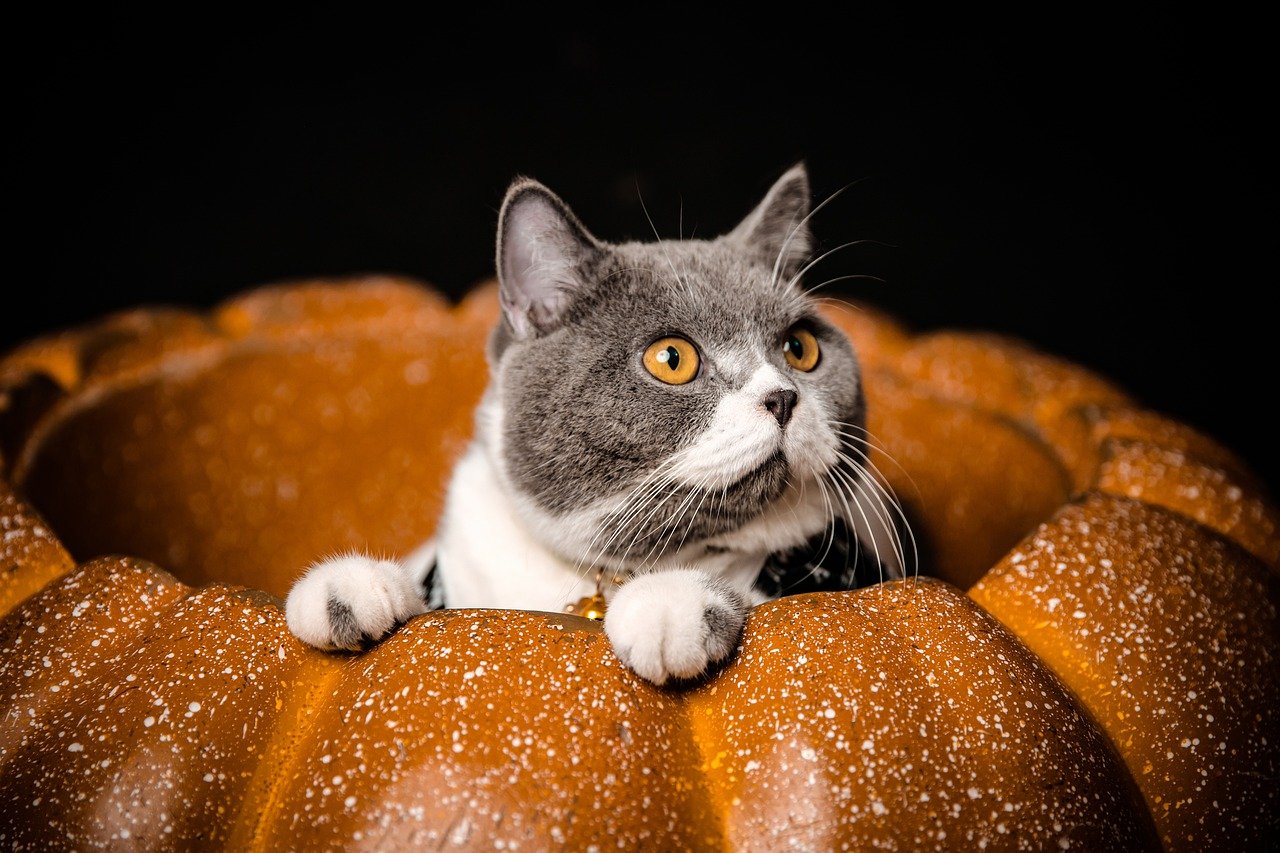
Addressing Pet Obesity
Once you've recognized that your beloved pet is carrying a few extra pounds, the next step is to take action. Addressing pet obesity is not just about helping them shed those pounds; it’s about enhancing their overall quality of life. Just like humans, pets can face serious health risks if they remain overweight, including diabetes, heart disease, and joint problems. So, where do we start? The first step is creating a realistic weight loss plan tailored specifically for your furry friend.
A structured weight loss plan is essential for success. This plan should include both dietary changes and increased physical activity. For instance, if your pet is used to lounging around all day, gradually introducing them to a more active lifestyle can make a world of difference. Think of it as a gentle nudge to get them moving, rather than a sudden sprint to the finish line. Here are some key elements to consider when crafting this plan:
- Consult Your Veterinarian: Before making any significant changes, it’s crucial to consult your vet. They can help you determine your pet's ideal weight and suggest a safe weight loss goal.
- Adjust Their Diet: Switch to a calorie-controlled diet that meets your pet’s nutritional needs without the excess calories. Look for high-quality, low-calorie pet food that’s rich in nutrients.
- Increase Exercise: Aim for at least 30 minutes of activity each day. This can include walks, playtime, or even agility training. The goal is to make exercise fun for your pet!
Monitoring progress is equally important. Just like we track our own progress on a weight loss journey, keeping an eye on your pet’s weight will help keep both of you motivated. You can weigh your pet weekly or biweekly to see how they’re doing. If you notice they’re not losing weight as expected, it might be time to reassess their diet or exercise routine. A simple chart can help track their weight over time:
| Date | Weight (lbs) | Notes |
|---|---|---|
| Week 1 | 25 | Initial weight |
| Week 2 | 24.5 | Increased exercise |
| Week 3 | 24 | Adjusted diet |
Remember, patience is key. Weight loss is a gradual process, and it’s essential to celebrate small victories along the way. If your pet loses just a few ounces, that’s progress! Keeping their spirits high will make the journey enjoyable for both of you. Incorporate fun activities that you can do together, like fetching a ball or playing tug-of-war. This not only helps with weight loss but also strengthens the bond between you and your pet.
In summary, addressing pet obesity involves a combination of a well-thought-out weight loss plan, regular monitoring, and, most importantly, a supportive environment. By making these changes, you’re not just helping your pet lose weight; you’re paving the way for a healthier, happier life. Now, let’s tackle some frequently asked questions to help you on this journey!
Q: How quickly should my pet lose weight?
A: A safe weight loss rate is about 1-2% of their body weight per week. Rapid weight loss can lead to health issues.
Q: Can I feed my pet table scraps?
A: While it may be tempting, table scraps can lead to unbalanced nutrition and excess calories. Stick to pet food designed for their dietary needs.
Q: What if my pet doesn’t like their new food?
A: Transition gradually by mixing the new food with their current food over a week or two. This can help them adjust to the new taste.
Creating a Weight Loss Plan
Creating a weight loss plan for your pet is not just about cutting back on food; it's about developing a comprehensive strategy that promotes a healthier lifestyle. Just like humans, pets require a balanced approach that includes proper nutrition and regular exercise. The first step in crafting this plan is to consult with your veterinarian. They can provide tailored advice based on your pet's specific needs, age, and health conditions.
Once you have a veterinarian's input, it’s time to set realistic goals. A good rule of thumb is to aim for a weight loss of about 1% to 2% of your pet’s body weight per week. This gradual approach ensures that the weight loss is safe and sustainable. To keep things organized, consider creating a weight loss journal to track your pet's progress. In this journal, you can note down the following:
- Initial weight and target weight
- Daily food intake
- Exercise routines
- Weekly weight check-ins
Next, focus on the dietary aspect of your weight loss plan. Transition to a high-quality, low-calorie pet food that meets your pet's nutritional needs without adding excess calories. It's essential to read the labels and understand the caloric content of the food you're providing. You might even want to consider using a measuring cup or a kitchen scale to ensure you’re serving the correct portions. Remember, just because your pet is giving you those adorable puppy eyes doesn't mean they need an extra treat!
In addition to dietary changes, incorporating physical activity into your pet’s routine is crucial. Aim for at least 30 minutes of exercise each day. This could include walks, playtime, or even agility training. The key is to make it fun! If your pet enjoys their exercise, they’re more likely to stick with the program. You can also mix things up by trying different activities to keep your pet engaged.
Finally, don’t forget to celebrate small victories along the way! When your pet loses a pound or two, reward them with extra love and attention rather than food. This positive reinforcement helps to keep both you and your pet motivated throughout the journey. Remember, weight loss is a marathon, not a sprint, and with consistent effort, you’ll see results.
Q: How long will it take for my pet to lose weight?
A: Weight loss timelines can vary based on your pet's starting weight, age, and health. Generally, a safe weight loss is 1% to 2% of their body weight per week.
Q: Can I use treats during the weight loss process?
A: Yes, but opt for low-calorie treats and ensure they are included in your pet's daily caloric intake. Consider using fruits or vegetables as healthy alternatives.
Q: What if my pet refuses to exercise?
A: Try to find activities that excite your pet. Sometimes, a new toy or a different location can spark their interest in being active.
Q: Should I change my pet's food suddenly?
A: No, it’s best to transition gradually over a week or so to avoid digestive upset. Mix a small amount of the new food with the old food and gradually increase the new food's proportion.
Monitoring Progress
Monitoring your pet's weight loss journey is not just a good idea; it's a vital part of the process that can make all the difference between success and stagnation. Just like we track our own health and fitness goals, keeping an eye on your furry friend's progress can help you stay motivated and make necessary adjustments along the way. So, how do you effectively monitor your pet’s weight loss? Let’s dive into some practical strategies!
First and foremost, regular weight checks are essential. Aim to weigh your pet at least once a week. This frequency allows you to spot trends early on, whether they’re gaining, losing, or maintaining weight. You can use a simple kitchen scale for smaller pets or take them to the vet for more accurate measurements. To make it easier, keep a weight log where you jot down the weight each week. This not only helps you see the bigger picture but also provides a sense of accomplishment as you witness progress over time.
In addition to tracking weight, it's crucial to assess other indicators of health. Pay attention to your pet’s energy levels and physical appearance. Are they more playful? Is their coat looking shinier? These signs can be just as important as the number on the scale. You might even consider using a Body Condition Score (BCS) chart to evaluate your pet’s body fat and muscle condition. This chart can help you visually assess whether your pet is on the right track. Here’s a simple example:
| Body Condition Score | Description |
|---|---|
| 1 | Severely underweight, ribs easily visible |
| 3 | Ideal weight, ribs can be felt but not seen |
| 5 | Obese, ribs difficult to feel, noticeable fat deposits |
Another effective method for monitoring progress is to incorporate activity tracking. Just like we might wear fitness trackers, there are devices and apps designed for pets that can help you keep tabs on their activity levels. This is particularly useful for ensuring that your pet is getting enough exercise to complement their dietary changes. You could also set up a routine that includes daily walks, playtime, or even agility training, which not only helps with weight management but also strengthens your bond with your pet.
Lastly, don’t forget to consult with your veterinarian throughout this journey. They can provide valuable insights and adjust your pet's weight loss plan as needed. Regular check-ups allow you to discuss your pet's progress and get professional advice on any concerns you may have. Remember, the goal is not just to help your pet lose weight but to promote a healthier lifestyle that they can maintain long-term.
- How often should I weigh my pet? It's best to weigh your pet weekly to monitor progress effectively.
- What should I do if my pet isn't losing weight? Consult your vet to review their diet and exercise plan, and make adjustments as necessary.
- Can I use human food as treats? Yes, but ensure it's healthy and safe for pets, and account for it in their daily caloric intake.
- How long will it take for my pet to lose weight? Weight loss can vary, but a safe guideline is about 1-2% of their body weight per week.
Frequently Asked Questions
- What is pet obesity?
Pet obesity is a condition where pets carry excess body weight, which can lead to serious health issues. It's measured using a body condition score (BCS) that evaluates a pet's weight relative to its ideal weight.
- How can I tell if my pet is obese?
Look for physical signs like a lack of a defined waist, difficulty in feeling their ribs, and an overall round appearance. Behavioral signs may include decreased energy and reluctance to engage in play.
- What causes obesity in pets?
Obesity in pets is often caused by a combination of poor diet, lack of exercise, and sometimes genetic factors. Overfeeding and high-calorie treats can also contribute significantly to weight gain.
- How can I help my pet lose weight?
Start by consulting your veterinarian to create a tailored weight loss plan. This plan should include a balanced diet with controlled portions and regular exercise to help your pet shed those extra pounds safely.
- Is it safe for pets to lose weight quickly?
No, rapid weight loss can be harmful to pets. It's essential to aim for a gradual weight loss of about 1-2% of their body weight per week to ensure it's safe and sustainable.
- How often should I weigh my pet during their weight loss journey?
Weigh your pet every two weeks to monitor their progress. This will help you make necessary adjustments to their diet and exercise plan while keeping them motivated.
- Can certain dog breeds be more prone to obesity?
Yes, some breeds are more susceptible to obesity due to their genetics and metabolism. Breeds like Labrador Retrievers, Beagles, and Bulldogs are known to have a higher risk of becoming overweight.
- What are the health risks associated with pet obesity?
Obesity can lead to numerous health issues in pets, including diabetes, heart disease, arthritis, and a shorter lifespan. Maintaining a healthy weight is crucial for their overall well-being.
- Are there specific diets for weight loss in pets?
Yes, there are specially formulated weight loss diets available for pets. These diets are designed to provide essential nutrients while reducing calorie intake. Always consult your vet before making any dietary changes.

